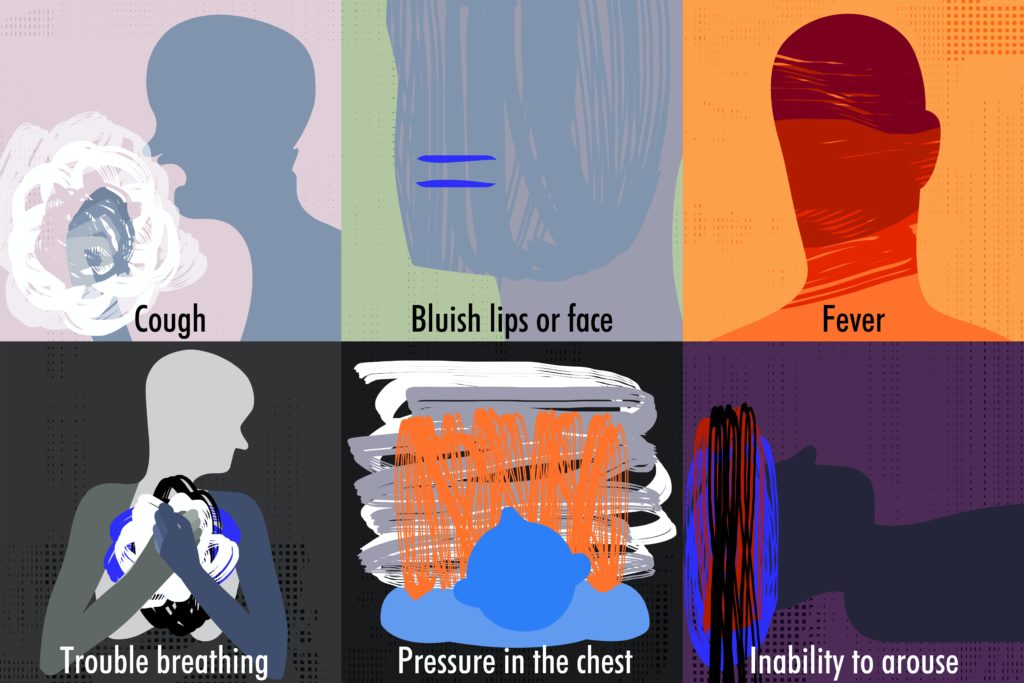Coronavirus-Guidance on Business Operations
Recommended strategies for employers to use now:
Actively encourage sick employees to stay home:
- Employees who have symptoms of acute respiratory illness are recommended to stay home and not come to work until they are free of fever (100.4° F [38.0° C] or greater.
- Employees should notify their supervisor and stay home if they are sick.
- Ensure that your sick leave policies are flexible and consistent with public health guidance and that employees are aware of these policies.
- Do not require a healthcare provider’s note for employees who are sick with acute respiratory illness to validate their illness or to return to work, as healthcare provider offices and medical facilities may be extremely busy and not able to provide such documentation in a timely way.
- Employers should maintain flexible policies that permit employees to stay home to care for a sick family member. Employers should be aware that more employees may need to stay at home to care for sick children or other sick family members than is usual.

Separate sick employees:
CDC recommends that employees who appear to have acute respiratory illness symptoms (i.e. cough, shortness of breath) upon arrival to work or become sick during the day should be separated from other employees and be sent home immediately. Sick employees should cover their noses and mouths with a tissue when coughing or sneezing (or an elbow or shoulder if no tissue is available).
Emphasize staying home when sick, respiratory etiquette, and hand hygiene by all employees:
- Place posters that encourage staying home when sick, cough and sneeze etiquette, and hand hygiene at the entrance to your workplace and in other workplace areas where they are likely to be seen.
- Provide tissues and no-touch disposal receptacles for use by employees.
- Instruct employees to clean their hands often with an alcohol-based hand sanitizer that contains at least 60-95% alcohol, or wash their hands with soap and water for at least 20 seconds. Soap and water should be used preferentially if hands are visibly dirty.
- Provide soap and water and alcohol-based hand rubs in the workplace. Ensure that adequate supplies are maintained. Place hand rubs in multiple locations or in conference rooms to encourage hand hygiene.
Visit the coughing and sneezing etiquette and clean hands webpage for more information.

Perform routine environmental cleaning:
- Routinely clean all frequently touched surfaces in the workplace, such as workstations, countertops, and doorknobs. Use the cleaning agents that are usually used in these areas and follow the directions on the label.
- No additional disinfection beyond routine cleaning is recommended at this time.
- Provide disposable wipes so that commonly used surfaces (for example, doorknobs, keyboards, remote controls, desks) can be wiped down by employees before each use.
Advise employees before traveling to take certain steps:
- Advise employees to check themselves for symptoms of acute respiratory illness before starting travel and notify their supervisor and stay home if they are sick.
- Ensure employees who become sick while traveling or on temporary assignment understand that they should notify their supervisor and should promptly call a healthcare provider for advice if needed.

Additional Measures in Response to Currently Occurring Sporadic Importations of the COVID-19:
- Employees who are well but who have a sick family member at home with COVID-19 should notify their supervisor and refer to CDC guidance for how to conduct a risk assessment of their potential exposure.
- If an employee is confirmed to have COVID-19, employers should inform fellow employees of their possible exposure to COVID-19 in the workplace but maintain confidentiality as required by the Americans with Disabilities Act (ADA). Employees exposed to a co-worker with confirmed COVID-19 should refer to CDC guidance for how to conduct a risk assessment of their potential exposure
Make a business continuity plan
- Explore whether you can establish policies and practices, such as flexible worksites (e.g., telecommuting) and flexible work hours (e.g., staggered shifts), to increase the physical distance among employees and between employees and others if state and local health authorities recommend the use of social distancing strategies. For employees who are able to telework, supervisors should encourage employees to telework instead of coming into the workplace until symptoms are completely resolved. Ensure that you have the information technology and infrastructure needed to support multiple employees who may be able to work from home.
- Identify essential business functions, essential jobs or roles, and critical elements within your supply chains (e.g., raw materials, suppliers, subcontractor services/products, and logistics) required to maintain business operations. Plan for how your business will operate if there is increasing absenteeism or these supply chains are interrupted.
- Set up authorities, triggers, and procedures for activating and terminating the company’s infectious disease outbreak response plan, altering business operations (e.g., possibly changing or closing operations in affected areas), and transferring business knowledge to key employees. Work closely with your local health officials to identify these triggers.
Want the Agency to handle all of the hiring? Agency 8 is ready to help! Email us at team@agency8recruiting.com or look us up at www.agency8recruiting.com
